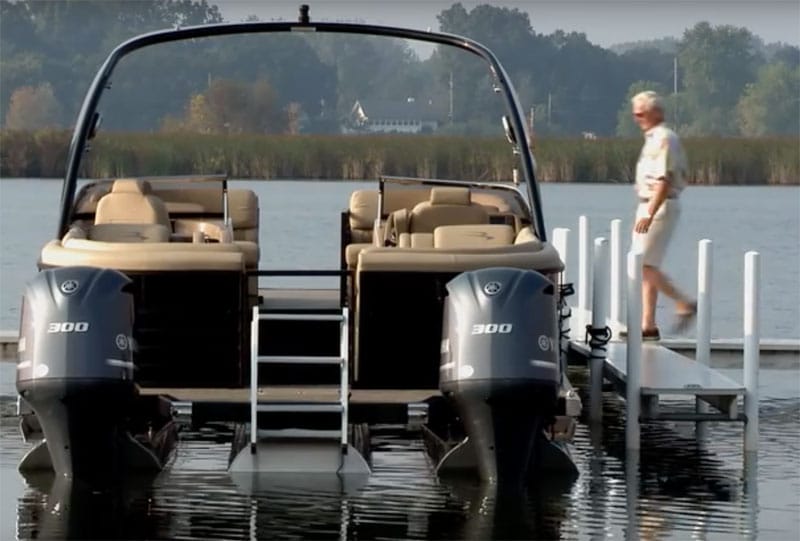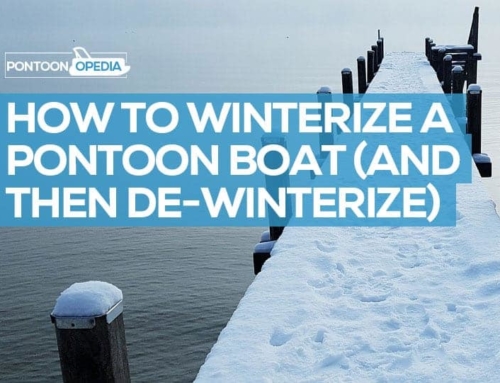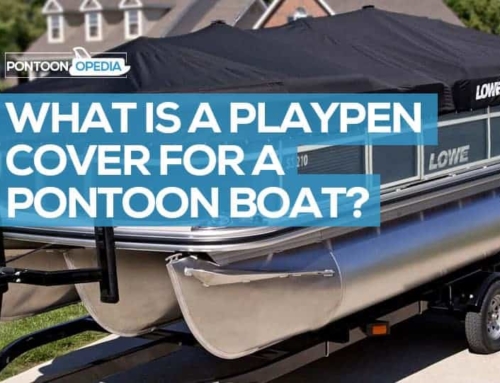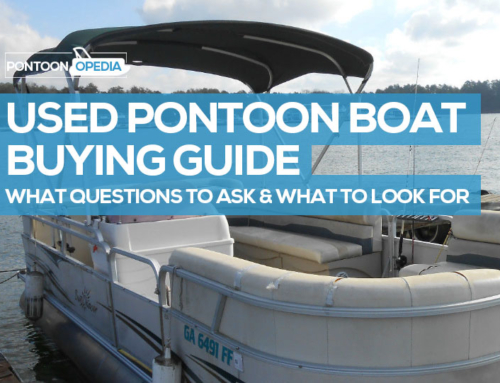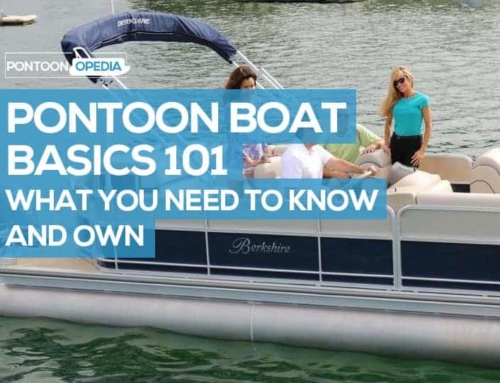Once you’ve chosen the pontoon boat that’s right for you and your family, you’ll need to choose the right engine. For many first-time boat buyers, this decision-making process can be a bit intimidating – but it doesn’t need to be.
Don’t be afraid to work with your dealer to pick your engine, as they will be more than happy to help you – no matter how “green” you are when it comes to pontoons.
But you can do a little bit of advance homework, you’ll feel far more comfortable discussing your choice with the salesperson, and you’ll be ready to make an informed and confident decision when choosing the right engine to suit your pontoon, and your personal needs.
If you read on, I’ve got some essential tips that will help you in choosing the right engine for your pontoon boat.
Selecting the Right Power for Your Boat
First of all, most likely you will be purchasing an outboard engine. While there are stern-drive engines available for pontoon and deck boats, they are not common and tend to be used in specific markets and applications.
If you’re interested, ask your dealer about the different advantages in outboard and stern-drive power. Otherwise, you’ll be looking at either direct-injection two-stroke outboards or four-stroke outboards. Your dealer will be happy to explain the difference in these two types of engines. If you’d like to do a little research beforehand, Discover Boating provides an excellent overview of the engine types.
Handy Hint: Don’t confuse a trolling motor with your main engine – this is what trolling motors are.
These days, there’s not a big difference between engines and brands. They’re all very reliable, burn cleanly and offer great performance for family water sports. Your kids don’t need to worry about the engine not pulling hard enough to pop them out of the hole on tubes, boards or skis – and you can rest assured that starting your engine will be as effortless as starting your car.
In addition, all of today’s outboard motors have become very fuel efficient compared to outboards from just a few years ago.
The biggest question is going to be horsepower. To determine the engine size that’s right for your pontoon boat, go through the following checklist at home:
Budget: Determine how much you can afford to spend on an engine. (Your dealer will be happy to provide pricing for various horsepower selections.)
Usage: Discuss how you plan to use your boat. Are you going to use it for cruising and maybe occasional tubing and water skiing or a party barge? Are you planning to ski a lot? Or primarily fish? Will you be towing older kids and adults? Will you frequently carry large groups of passengers? So, what is the best pontoon boat for needs?
Possible restrictions: You’ll want to consider any lake restrictions. In other words, is it a small lake with limited opportunities for waters ports? Or is it a big lake that will allow you to run wide open? Are there any engine type or horse power restrictions?
Slip size: If you’re planning to rent a slip, does the marina have any size restrictions? Remember that pontoon boat length will include the engine.
Dock talk: Talk to friends and neighbors about the power they have on their boats. Find out what they like and don’t like about it.
Test ride: If you can, go for a ride with those friends or neighbors – and also ask your dealer to take you out for a few test rides with varying-horsepower outboards. Pontoon boats tend to perform about the same, regardless of brand, so in test rides you’ll really be getting a feel for the engines. And how you feel about the ride is more important than other people’s opinions.
Research: Do a little digging online to learn more about the engine types, horsepower and options you like based on what you’ve heard and on your test rides.
Dealer selection: Like a car, your boat’s engine will require regular service. Make sure your dealer has a good reputation for efficient and reputable service. Ideally, this relationship will last for many seasons, so selecting a dealer is a very important part of the boat- and engine-buying process.
Insurance: Finally, once you have a general idea of what you would like, contact your marine insurance company for any additional insights they might provide. I’ve put together a guide on how much you should be paying for pontoon boat insurance.
To provide a little perspective on horsepower, a family who is purchasing a pontoon boat to cruise a small lake will likely stay in the 25 to 40 horse power range. The same is true if the boat will be used primarily for fishing.
For tubing and occasional water skiing, that range jumps to 50 to 75 horse power. And if you’re planning on doing a lot of knee boarding, wake boarding and water skiing with older kids and adults on a big lake, you should consider the largest engine that will fit your boat’s rating and your budget.
The biggest mistake first-time boaters make with selecting power is choosing an engine that’s too small. Most new or used pontoon boats are purchased as part of a boat-and-motor package deal; if the engine is too small, you’ll end up selling it at a discount, purchasing a new motor at full price and paying the installation costs. In addition, your pontoon’s resale value will be higher with a larger engine. In short, err on the high side. Choose the largest-size engine your budget will allow.
That said, don’t overdose. First of all, you can’t put more horse power on the back of the boat than its certification allows. Second, while there are $40,000 luxury pontoon boats with 250 horse power engines available on the market, they fall into the specialized “high-performance” category – beyond what a family would need for normal boating experiences.
Conclusion
Generally speaking, pontoon boats are not intended or designed to be high-performance boats. There are much better boat alternatives for that application. As a result, most pontoon boats in use today fall into the 70 to 75 horse power category.
Now you’re ready to go see your dealer, who will help you make the appropriate decision on the engine; on performance options such as a third pontoon, lifting strakes and hydraulic steering; and on the correct propeller, based on how you’ll use your boat.

